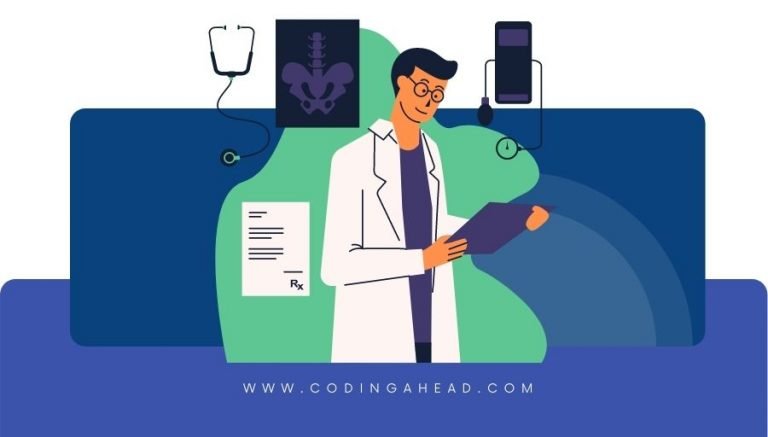How To Use CPT Code 58110
CPT 58110 describes the procedure of endometrial sampling, also known as biopsy, performed in conjunction with colposcopy. This article will cover the official description, procedure, qualifying circumstances, appropriate usage, documentation requirements, billing guidelines, historical information and billing examples.
1. What is CPT Code 58110?
CPT 58110 can be used to describe the procedure of endometrial sampling, or biopsy, that is performed during a colposcopy. This code is used when the physician collects a sample of the endometrium, the lining of the uterus, for histological evaluation. The procedure involves using a sampling instrument, such as a curette, brush, or Pipelle®, to obtain a section of tissue or scrape areas of the lining in different places.
2. Official Description
The official description of CPT code 58110 is: ‘Endometrial sampling (biopsy) performed in conjunction with colposcopy (List separately in addition to code for primary procedure).’ This code should be used in conjunction with the primary procedure code for colposcopy, such as 57420, 57421, 57452-57461.
3. Procedure
- After properly positioning the speculum during the colposcopy, the physician preps the cervix with an antiseptic solution and may administer a local anesthetic.
- The physician grasps the cervix with a tenaculum and uses a uterine sound to measure the depth of the endometrial cavity.
- A sampling instrument, such as a curette, brush, or Pipelle®, is passed through the cervix to the uterine cavity.
- The physician collects a sample of endometrium from the four quadrants of the uterus using one or more passes of the sampling instrument.
- The sampling instrument is withdrawn, the tenaculum is removed, and pressure is applied to the cervix to control any bleeding.
- Finally, the speculum is removed.
4. Qualifying circumstances
CPT 58110 is performed when the physician collects a sample of the endometrium during a colposcopy. It is important to note that this procedure is always performed in conjunction with a separately reportable visualization of the cervix and vagina, colposcopy, as a primary procedure. Therefore, CPT 58110 is never reported alone and should be used in addition to the primary procedure code for colposcopy.
5. When to use CPT code 58110
CPT code 58110 should be used when the physician performs endometrial sampling, or biopsy, as an add-on service during a colposcopy. It is important to report this code only when the procedure is performed in conjunction with a separately reportable visualization of the cervix and vagina, colposcopy, as a primary procedure. Modifier should not be reported with code 58110.
6. Documentation requirements
To support a claim for CPT 58110, the physician must document the following information:
- Indication for the endometrial sampling and the need for histological evaluation
- Specific sampling instrument used (curette, brush, or Pipelle®)
- Date of the procedure
- Details of the procedure, including the number of passes and the areas of the endometrium sampled
- Any complications or additional procedures performed
- Signature of the performing physician
7. Billing guidelines
When billing for CPT 58110, ensure that the procedure is performed in conjunction with a separately reportable visualization of the cervix and vagina, colposcopy, as a primary procedure. This code should not be reported alone and should always be used in addition to the primary procedure code for colposcopy. Modifier should not be reported with code 58110.
8. Historical information
CPT 58110 was added to the Current Procedural Terminology system on January 1, 2006. There have been no updates to the code since its addition.
9. Examples
- A physician performing endometrial sampling during a colposcopy to evaluate abnormal cervical cells.
- A gynecologist collecting a sample of the endometrium for histological evaluation during a colposcopy to assess postmenopausal bleeding.
- A surgeon performing endometrial biopsy as an add-on service during a colposcopy to investigate abnormal uterine bleeding.
- An obstetrician-gynecologist obtaining a sample of the endometrium during a colposcopy to assess the presence of cancer cells in a patient with abnormal Pap smear results.
- A physician performing endometrial sampling during a colposcopy to evaluate the cause of recurrent miscarriages.
- A gynecologist collecting a sample of the endometrium for histological evaluation during a colposcopy to investigate infertility issues.
- A surgeon performing endometrial biopsy as an add-on service during a colposcopy to assess the presence of endometrial hyperplasia.
- An obstetrician-gynecologist obtaining a sample of the endometrium during a colposcopy to evaluate the cause of pelvic pain.
- A physician performing endometrial sampling during a colposcopy to assess the presence of abnormal cells in a patient with a family history of uterine cancer.
- A gynecologist collecting a sample of the endometrium for histological evaluation during a colposcopy to investigate the cause of postcoital bleeding.



